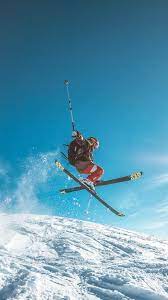
Japan, renowned for its breathtaking landscapes and world-class ski resorts, attracts winter sports enthusiasts from around the globe. While the powdery snow and picturesque mountains offer an exhilarating experience, it’s crucial to be aware of the potential risks associated with skiing. In this guide, we’ll explore common ski injuries in Japan and provide essential tips on how to avoid them, ensuring your winter getaway remains a thrilling and injury-free adventure.
Understand Common Ski Injuries
1. **Sprains and Strains:**
– **Cause:** Sudden movements, overexertion, or improper skiing techniques can lead to sprains and strains in muscles and ligaments.
– **Prevention:** Prioritise proper warm-up exercises to prepare your muscles for the physical demands of skiing. Focus on strengthening exercises for key muscle groups, such as the quadriceps and hamstrings.
2. **Fractures and Dislocations:**
– **Cause:** Falls, collisions, or high-speed impacts can result in fractures or dislocations, particularly in the extremities.
– **Prevention:** Wear well-fitted and properly maintained equipment, including helmets, to minimise the risk of head injuries. Practice controlled skiing and adhere to speed limits, especially in crowded areas.
3. **Cold-Related Injuries:**
– **Cause:** Exposure to extreme cold can lead to conditions such as frostbite and hypothermia.
– **Prevention:** Dress in layers to stay warm and dry. Protect exposed skin with appropriate gear, and take regular breaks indoors to warm up. Stay hydrated and be mindful of the signs of hypothermia.
4. **ACL Tears:**
– **Cause:** Sudden twists or changes in direction can cause anterior cruciate ligament (ACL) tears.
– **Prevention:** Invest time in proper ski training to improve technique and body mechanics. Strengthen the muscles around the knee through targeted exercises. Consider using knee braces for added support, especially if you have a history of knee issues.
5. **Altitude Sickness:**
– **Cause:** Ski resorts in Japan are often located at high altitudes, increasing the risk of altitude sickness.
– **Prevention:** Allow your body time to acclimate to higher altitudes by arriving a day or two before hitting the slopes. Stay hydrated, avoid excessive alcohol consumption, and be mindful of symptoms such as headaches, nausea, and dizziness.
Tips for Safe Skiing in Japan
1. **Take Lessons:**
– Enrol in skiing lessons, especially if you’re a beginner. Professional instructors can provide valuable guidance on proper techniques and safety measures.
2. **Use Well-Maintained Equipment:**
– Ensure your ski equipment, including bindings and boots, is in good condition and properly adjusted. Regularly check for wear and tear.
3. **Stay Informed:**
– Familiarise yourself with the skiing rules and regulations at your chosen resort. Stay updated on weather conditions and avalanche risks, and heed all warnings.
4. **Stay Hydrated and Nourished:**
– The combination of physical activity and cold weather can lead to dehydration. Drink plenty of water and eat nutritious meals to sustain your energy levels.
5. **Know Your Limits:**
– Ski within your skill level and comfort zone. Avoid attempting advanced slopes until you are confident in your abilities.
Conclusion
Skiing in Japan can be a thrilling and memorable experience, but safety should always be a top priority. By understanding the common risks and implementing preventive measures, you can minimise the chances of ski injuries and ensure a safe and enjoyable winter adventure on the Japanese slopes. So, gear up, stay informed, and carve those slopes responsibly!




